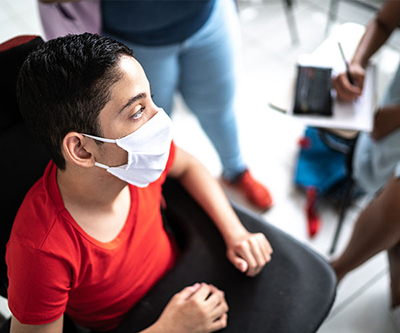
NICHD-funded scientists, as part of NIH’s RADx-UP program, are exploring how COVID-19 is transmitted in schools to gather information to help students and faculty attend school safely during the pandemic.
In April and July, NICHD announced funding for new projects to identify ways of safely returning students and staff to in-person schools in areas with vulnerable and underserved populations. The projects aim to address the needs of children with unequal access to COVID-19 testing, as well as those who face barriers to attending school remotely, such as lack of computer or internet access. Without in-person schooling, many children miss out on school-based meals, speech or occupational therapy, and after-school programs. Loss of such services disproportionately affects minorities, socially and economically disadvantaged children, children with disabilities, and those with medical complexities. Several papers from these projects were published later in the year.
One NICHD-supported study tracked COVID-19 transmission in several North Carolina school districts as the schools restarted in-person instruction for the 2020–2021 school year. The researchers found that with basic mitigation strategies, such as mask wearing and physical distancing, COVID-19 transmission in schools was very low—even when transmission in the surrounding communities was high. The findings indicate that schools practicing basic mitigation strategies can safely stay open even in areas with high community transmission.
Another study in North Carolina investigated in-school transmission of COVID-19 during a surge in community cases. The study found that transmission rates in schools remained low. The findings suggest that decisions about whether to close schools should be based on within-school transmission rates rather than community rates. The researchers also found that most transmissions in high schools occurred during sports-related activities, pointing to a need for vigilant enforcement of masking and other mitigation strategies during these events.
NICHD-supported scientists in St. Louis also investigated ways to optimize safety of in-person schooling for children with intellectual and developmental disabilities (IDDs). A virtual learning environment can be difficult for children with IDDs and their families, but people with IDDs may also be more vulnerable to severe disease and complications if they are infected with the coronavirus. The study found that weekly saliva testing and other safety measures in schools—such as mask wearing and reduced class sizes—were effective in protecting staff, children, and their families.
NICHD research helps school administrators and families develop the best ways to return children to the classroom safely and equitably.
 BACK TO TOP
BACK TO TOP